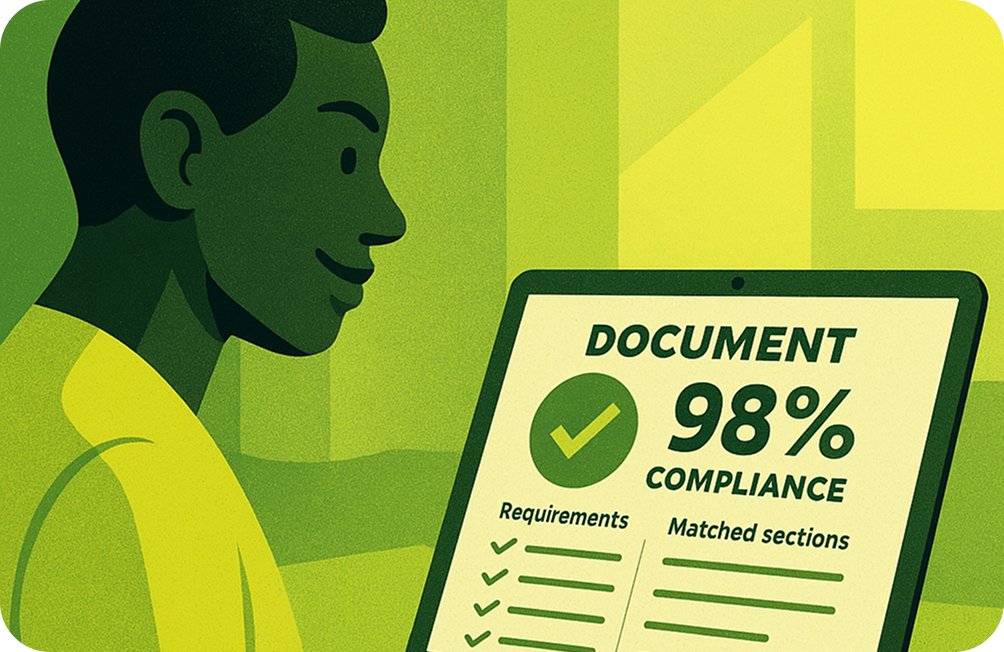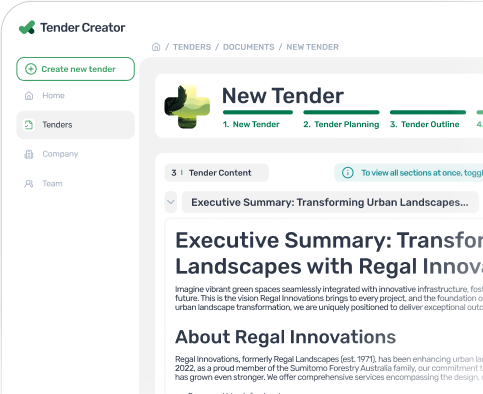Picture this: Your team receives a tender opportunity on Monday. By Friday, they're still buried in document formatting, compliance checklists, and version control nightmares. Meanwhile, your competitors using automated workflows have already submitted their polished, strategic responses and moved on to the next opportunity.
This isn't a hypothetical scenario – it's the daily reality for thousands of Australian businesses still relying on manual tender processes in 2025.
The Workflow Crisis Killing Australian Tender Success
In Australia's procurement landscape, where speed and quality determine success, inefficient workflows aren't just inconvenient, they're competitively fatal. The traditional 4-6 week tender preparation timeline isn't a necessity; it's a symptom of broken processes.
Consider the real cost of manual workflows:
- Sequential bottlenecks that turn 2-day tasks into 2-week ordeals
- Version control chaos with multiple team members working on conflicting documents
- Late-stage quality issues requiring complete rewrites days before submission
- Administrative overload consuming 80% of your team's valuable time
The result? Teams submit rushed, compliance-focused responses that fail to showcase their true capabilities or strategic value.
Why Manual Tender Workflows Are No Longer Viable
The numbers tell a stark story. According to the Australian Government Department of Finance, with $70 billion in annual government procurement alone, the opportunity is massive. Yet most businesses can only pursue a fraction of available tenders because their manual processes simply can't keep pace.
Here's what's really happening in manual tender preparation:
Week 1-2: The Documentation Maze
Teams waste precious days extracting requirements from tender documents, creating compliance matrices, and setting up basic document structures. Tasks that should take hours stretch into days.
Week 3-4: The Content Scramble
Multiple team members work in isolation, creating inconsistent messaging, duplicating efforts, and struggling with version control. Strategic thinking takes a back seat to document management.
Week 5-6: The Quality Panic
With deadlines looming, teams discover compliance gaps, inconsistent formatting, and weak value propositions. The rush to fix these issues leaves no time for strategic refinement.
The Automation Imperative: Transform Weeks into Hours
Leading Australian organisations are breaking free from this cycle by embracing workflow automation. They're not working harder, they're working smarter, and the results speak for themselves.
Instant Requirement Analysis
What once took days now takes minutes. AI-powered tools extract requirements, map compliance needs, and create structured response frameworks automatically. Your team starts with clarity, not confusion.
Parallel Processing Power
Instead of sequential bottlenecks, automated workflows enable simultaneous content development with real-time collaboration. Ten team members can work on different sections without stepping on each other's toes.
Continuous Quality Assurance
Forget last-minute quality panics. Automated compliance checking runs continuously, flagging issues immediately rather than days before submission. Quality becomes embedded, not bolted on.
Strategic Time Liberation
With automation handling the administrative burden, your experts can focus on what actually wins tenders: innovative solutions, compelling value propositions, and strategic differentiation.
The 7-Step Automated Workflow That Changes Everything
Progressive Australian teams are implementing streamlined workflows that compress tender preparation from weeks to days:
- Rapid Assessment (1-2 hours): AI analyses opportunity fit and resource requirements
- Automated Extraction (4-6 hours): Requirements mapped and compliance frameworks created
- Strategic Planning (2-3 hours): Teams focus on win themes and differentiation
- Parallel Creation (3-4 days): Multiple contributors work simultaneously with AI assistance
- Real-time Quality Checks (Integrated): Continuous compliance and consistency monitoring built into the process
- Smart Formatting (4-5 hours): Automated formatting to meet all submission requirements
- Strategic Review (3-4 hours): Final focus on value proposition and competitive positioning
Total time: 1.5 weeks of focused work instead of 4-6 weeks of chaos.











